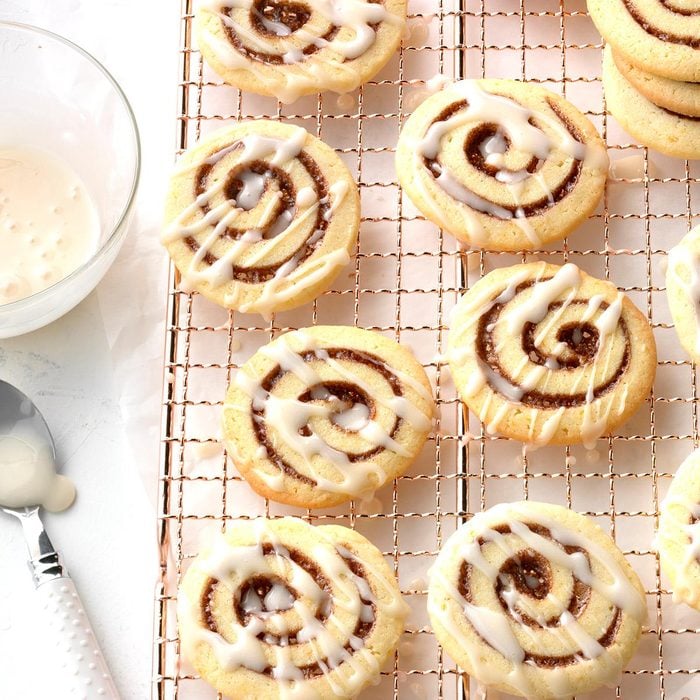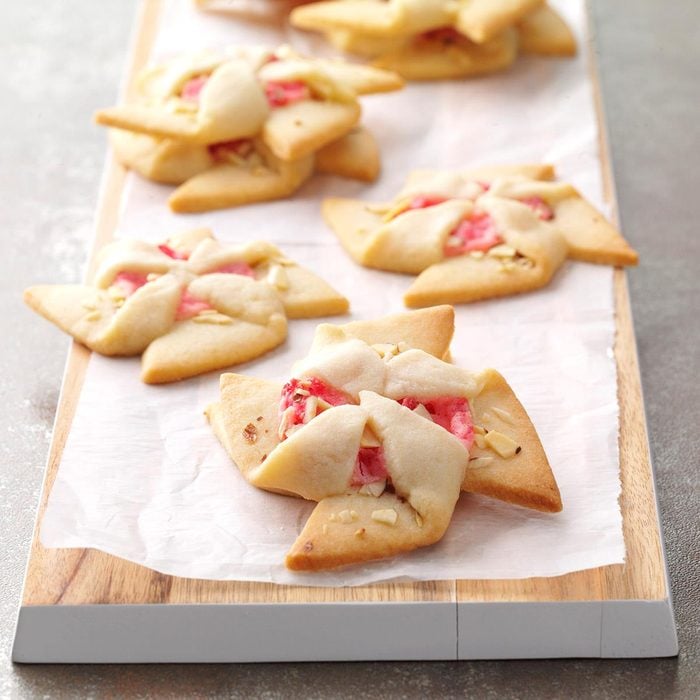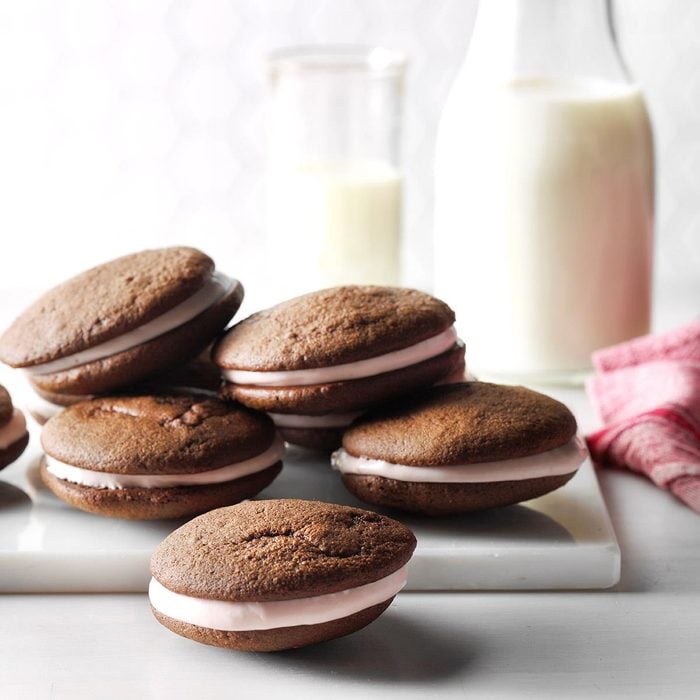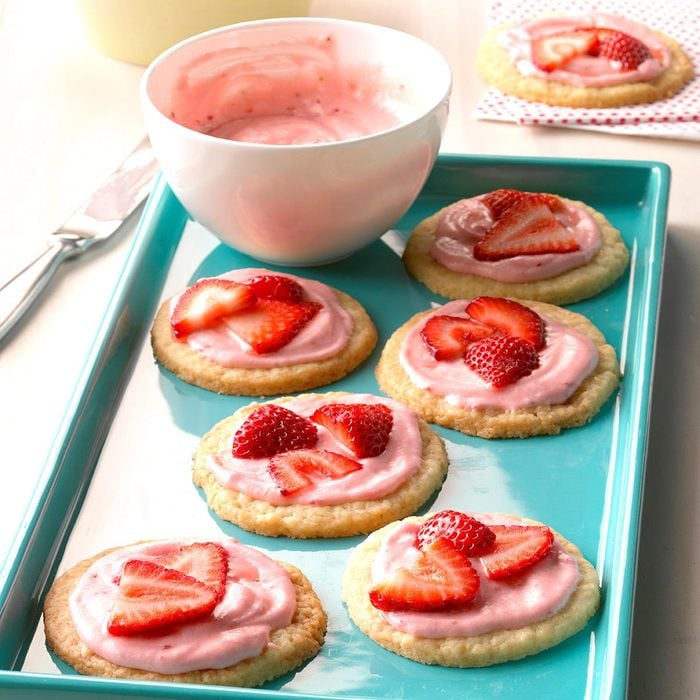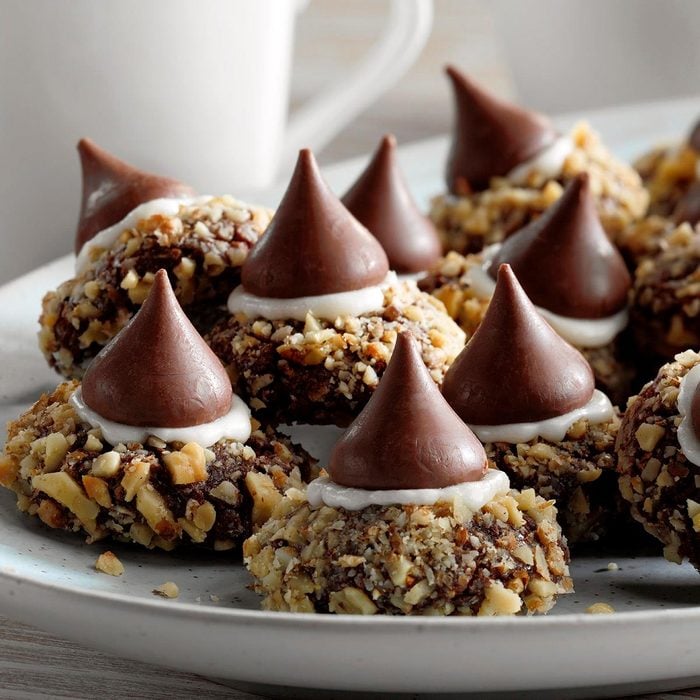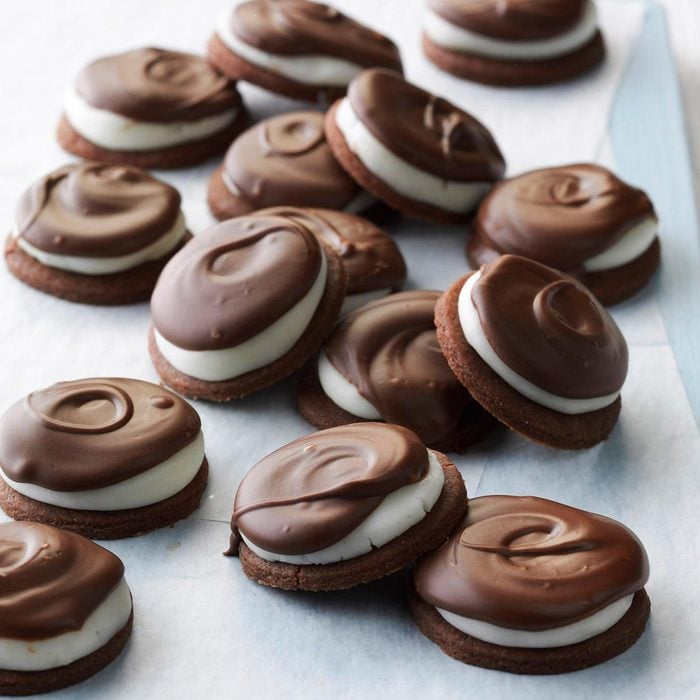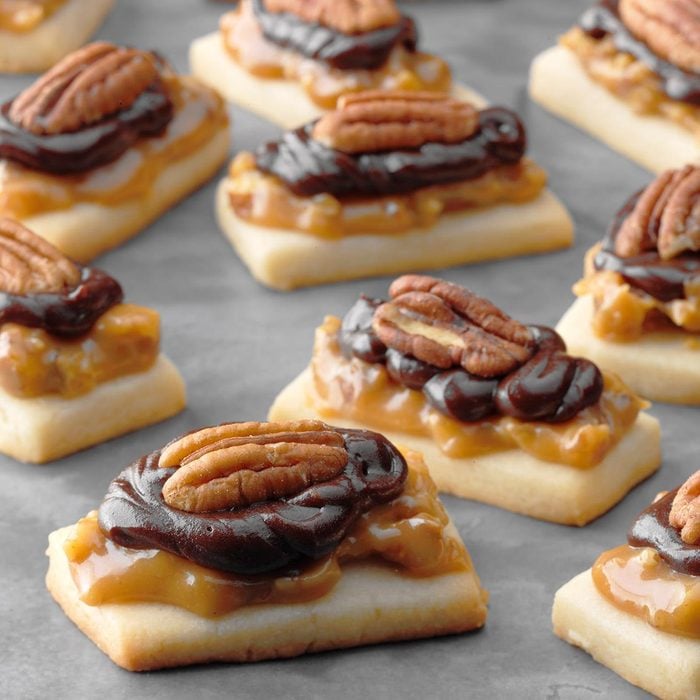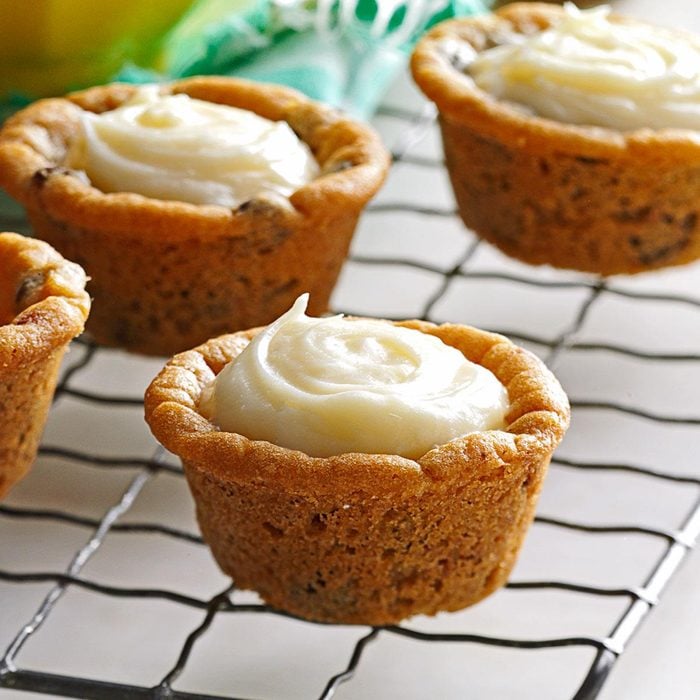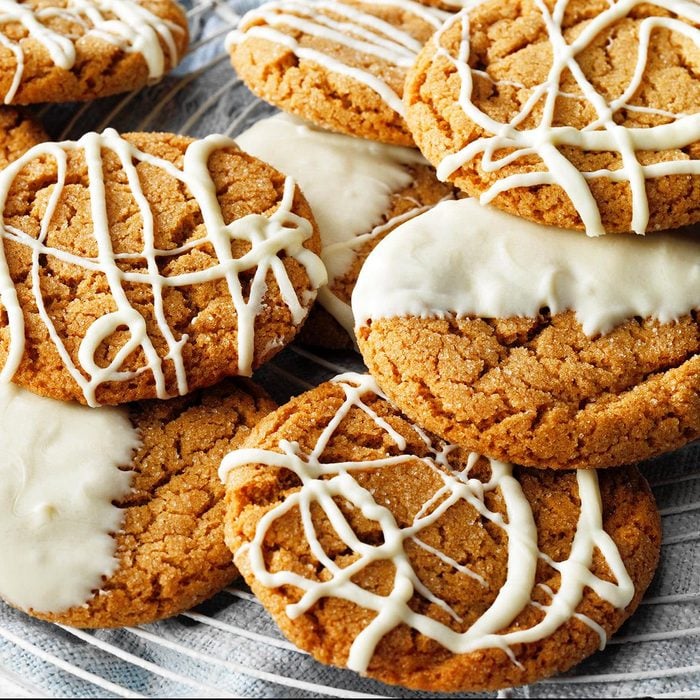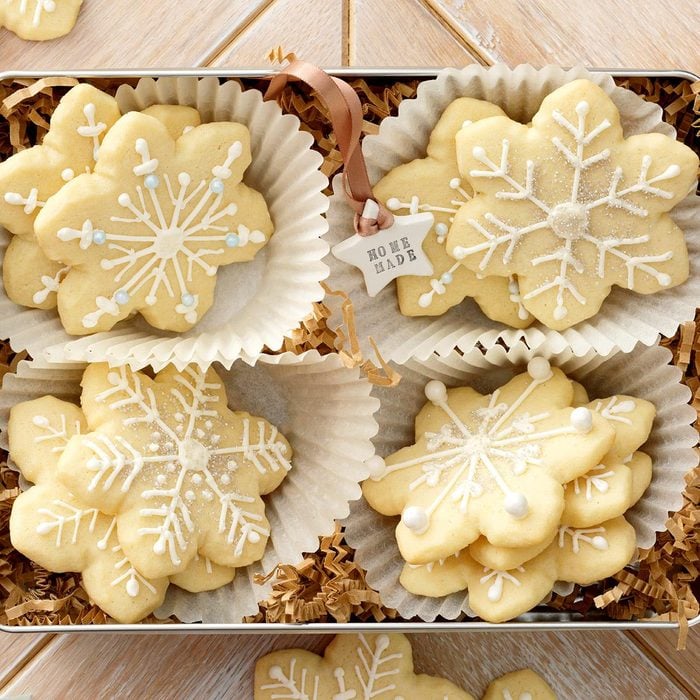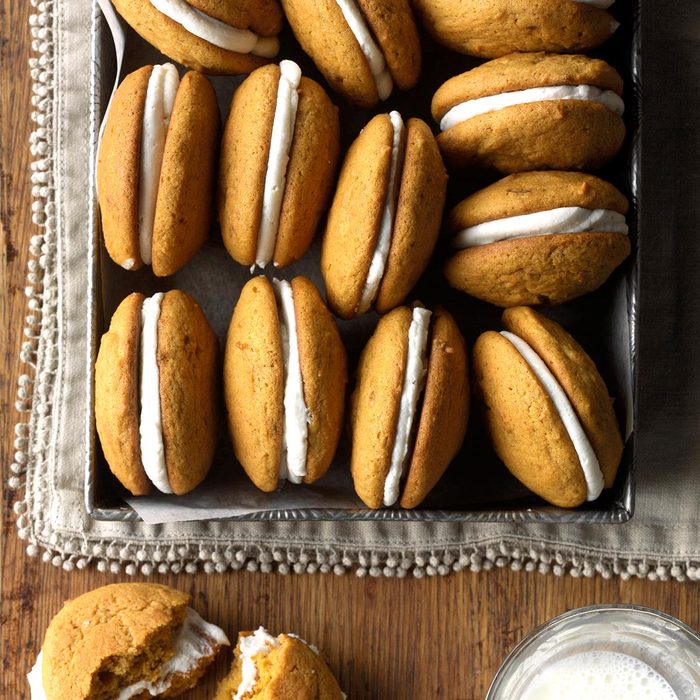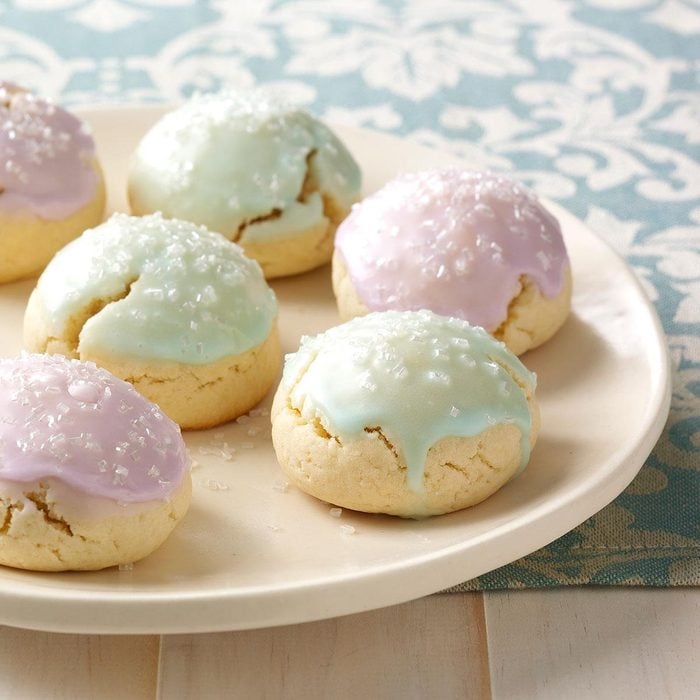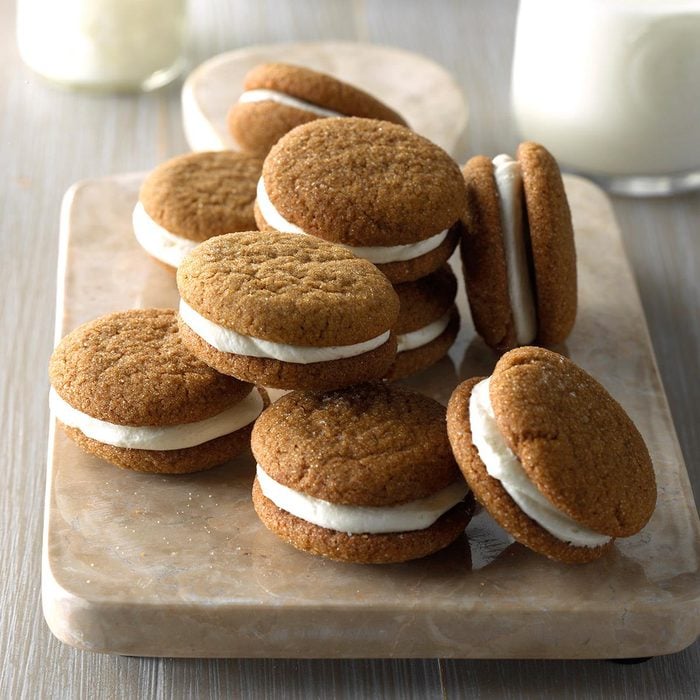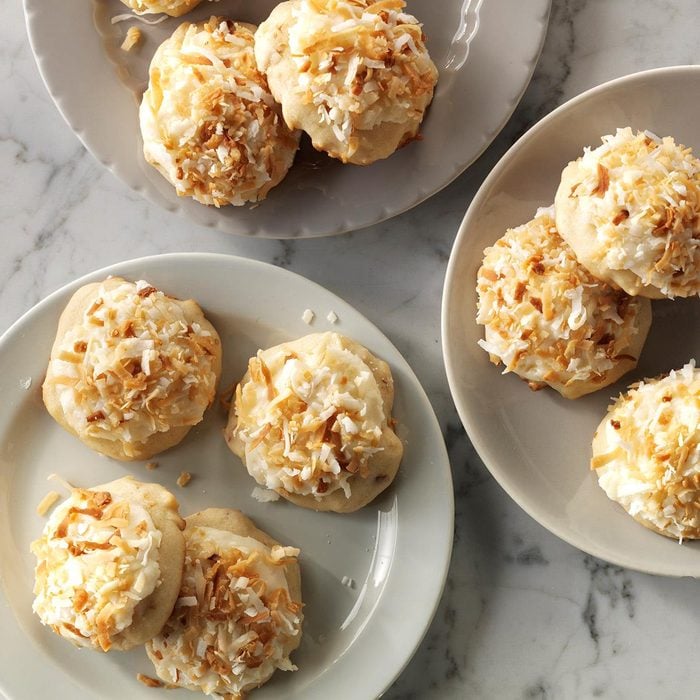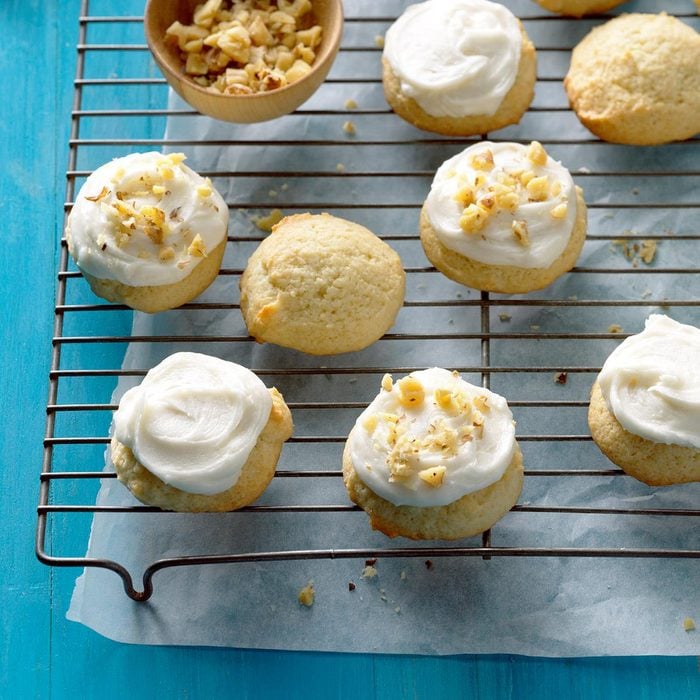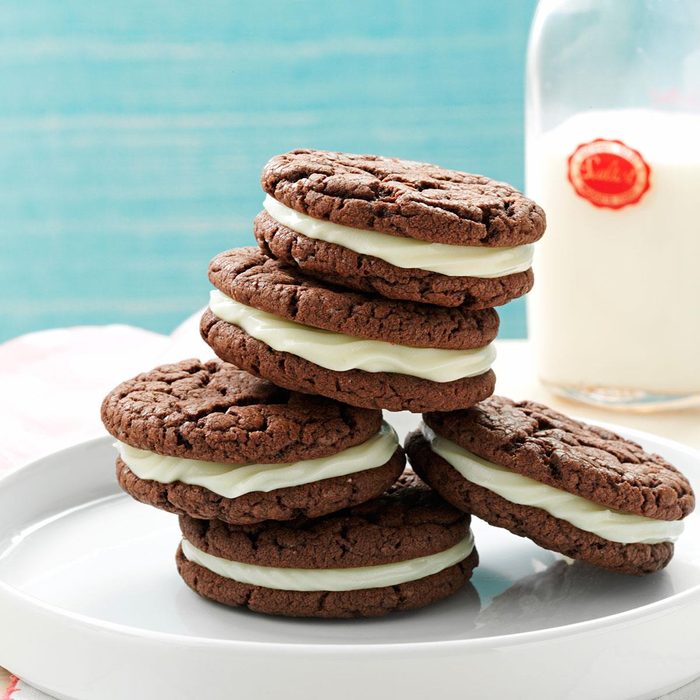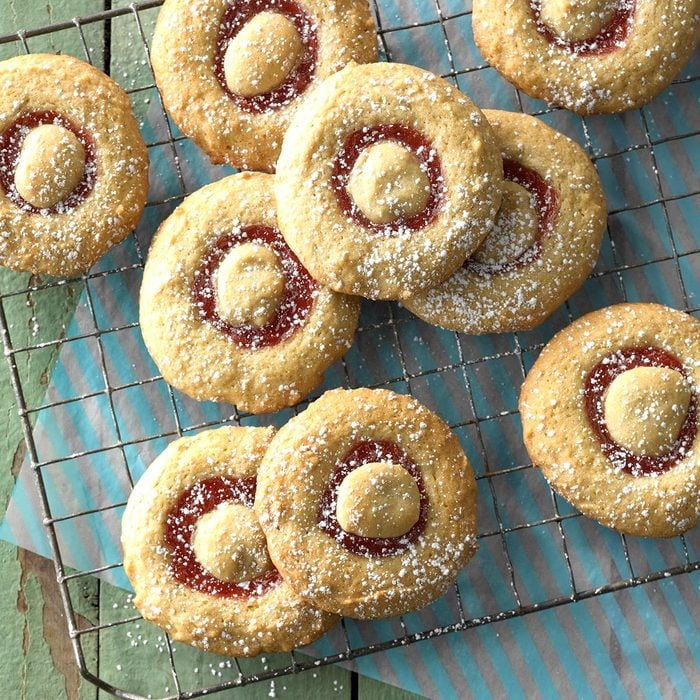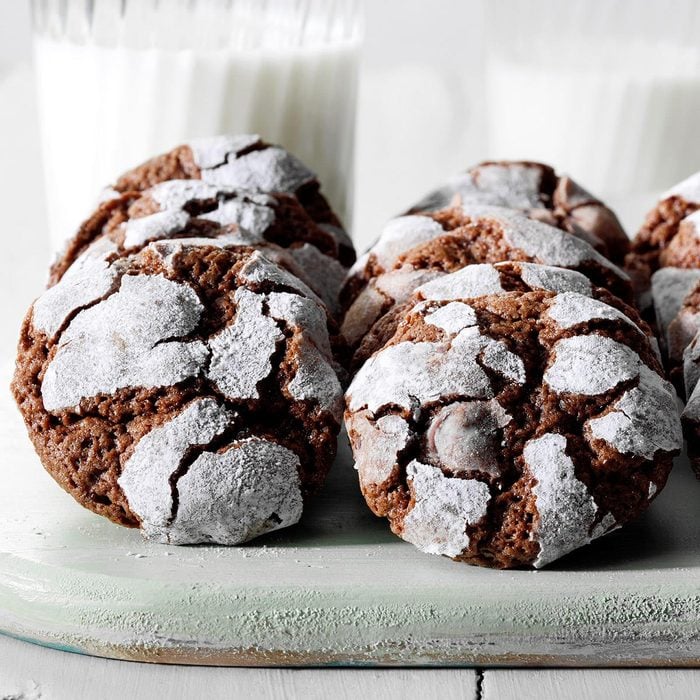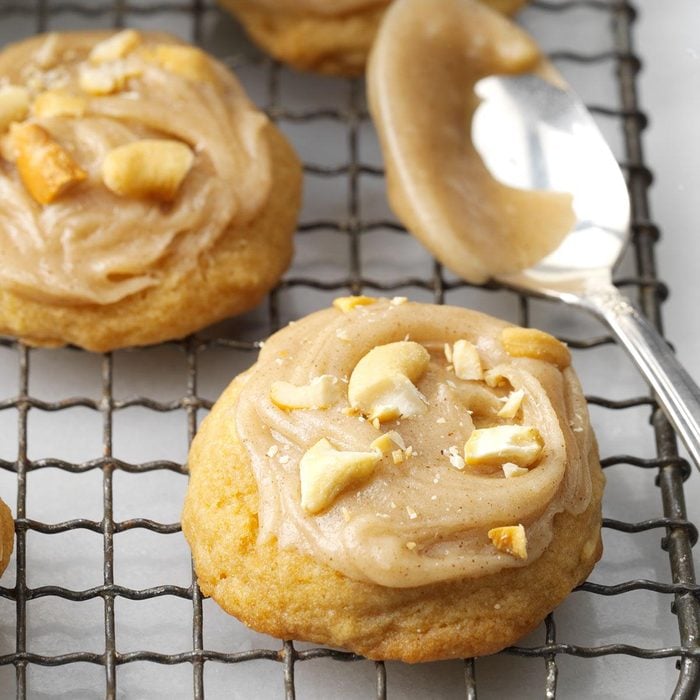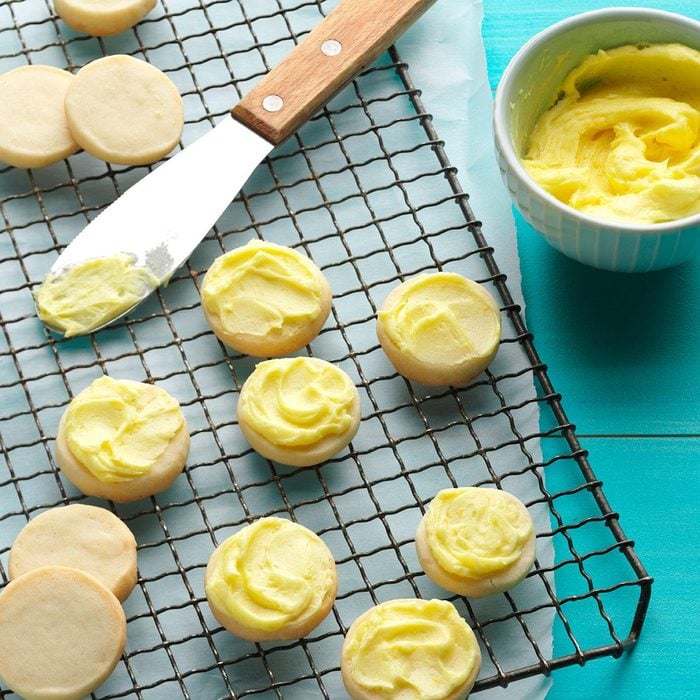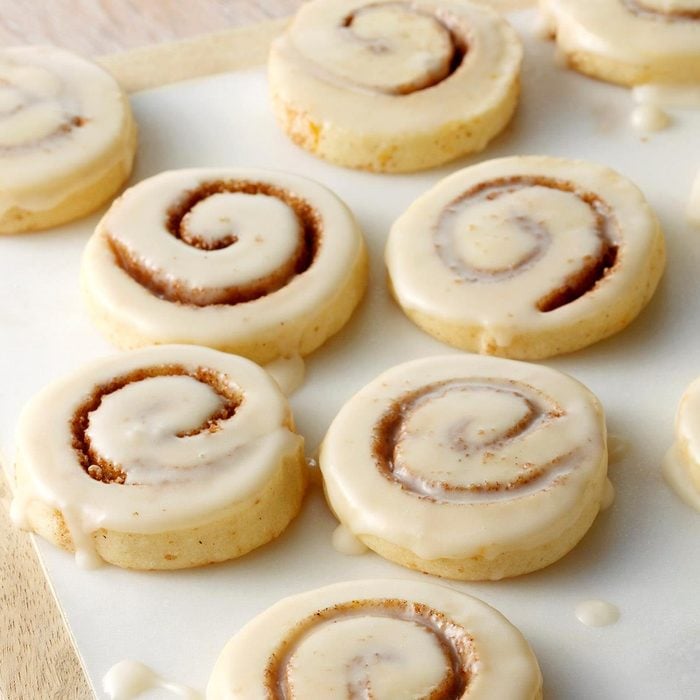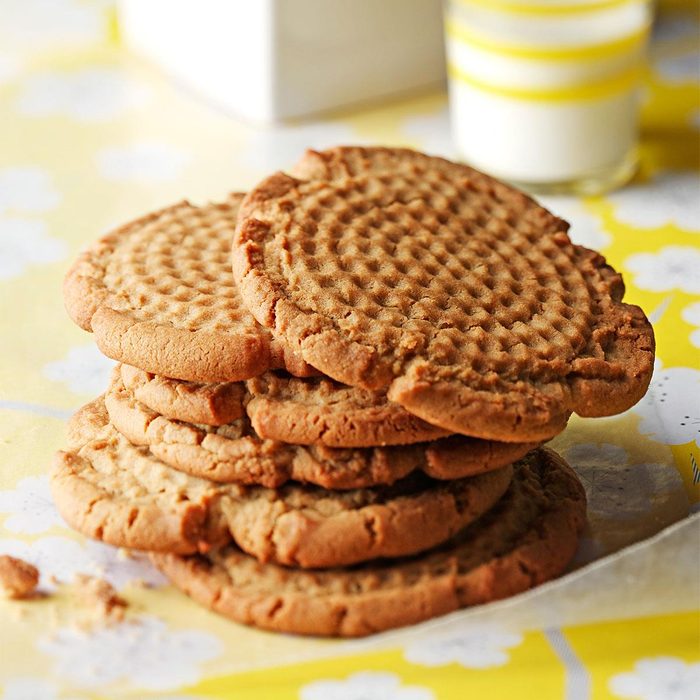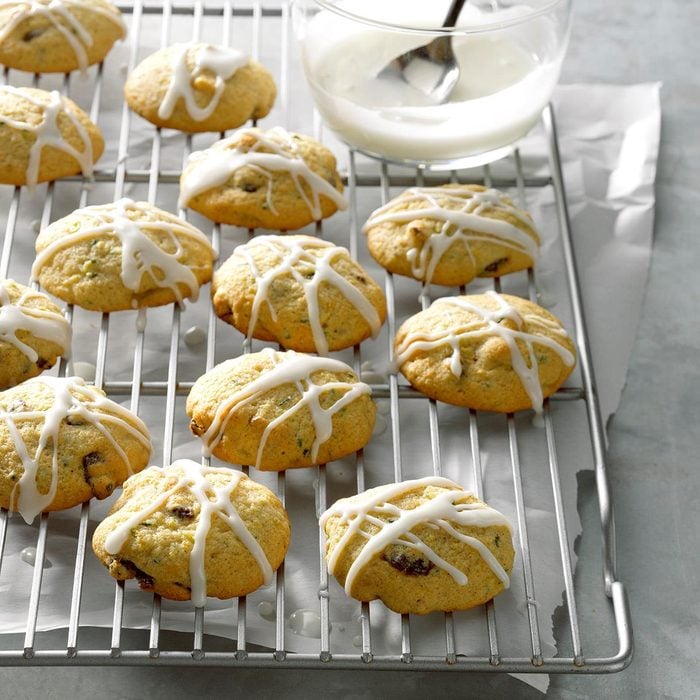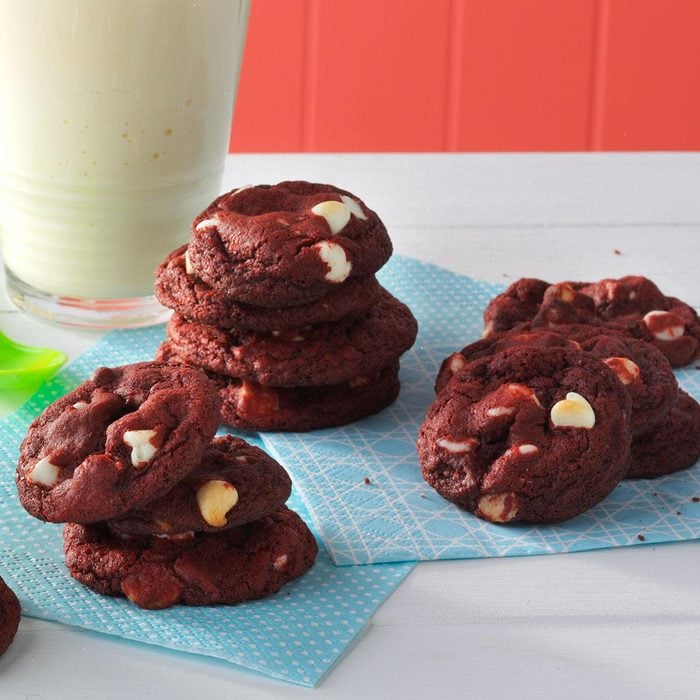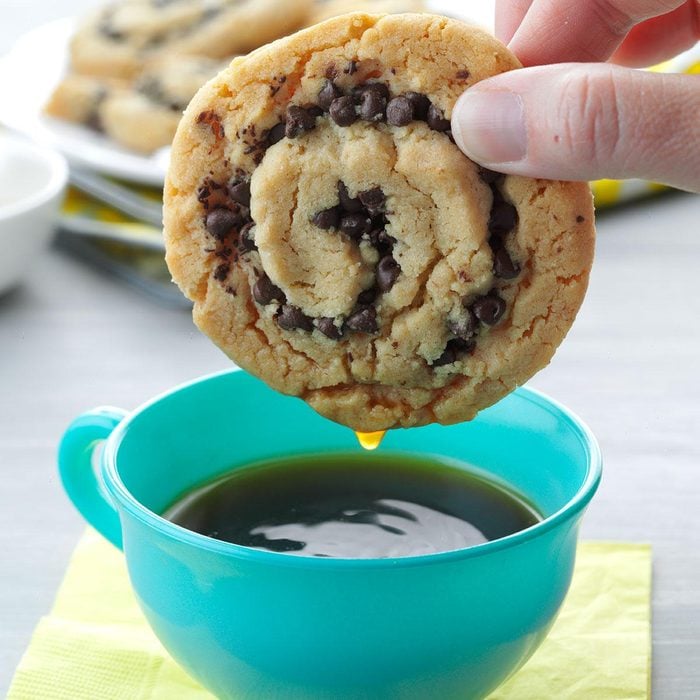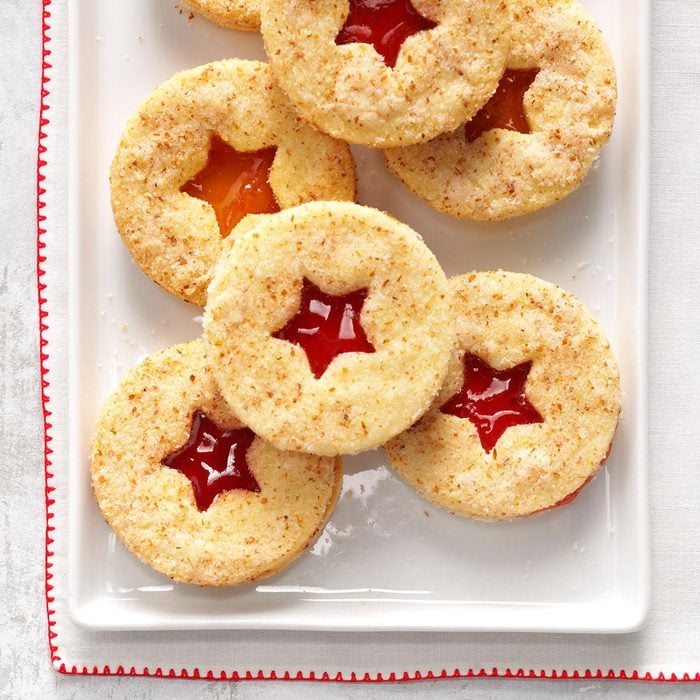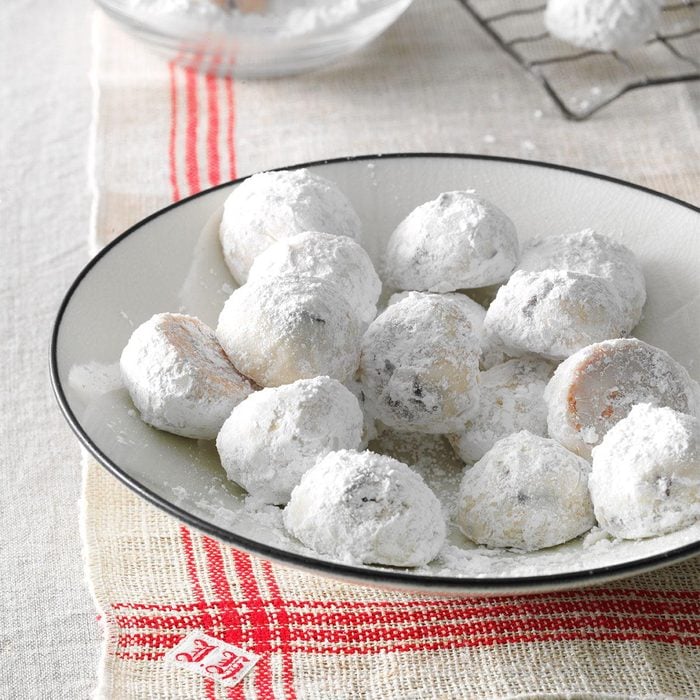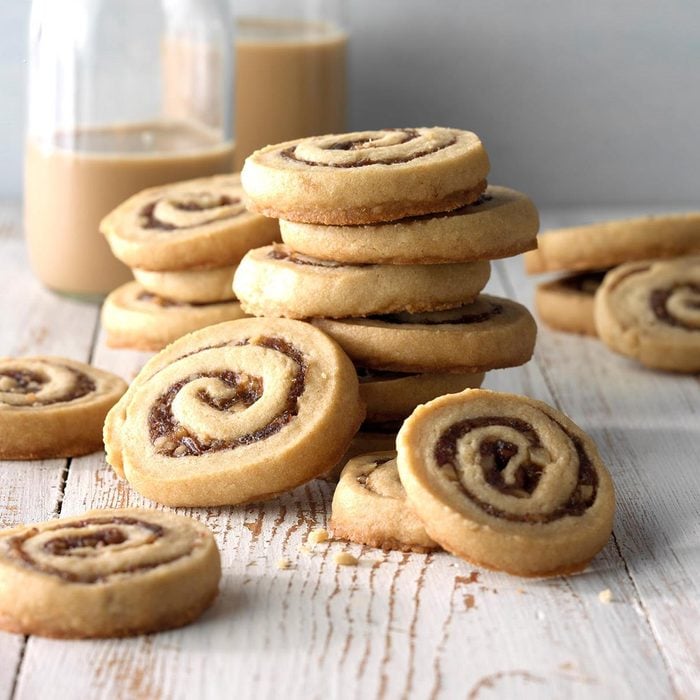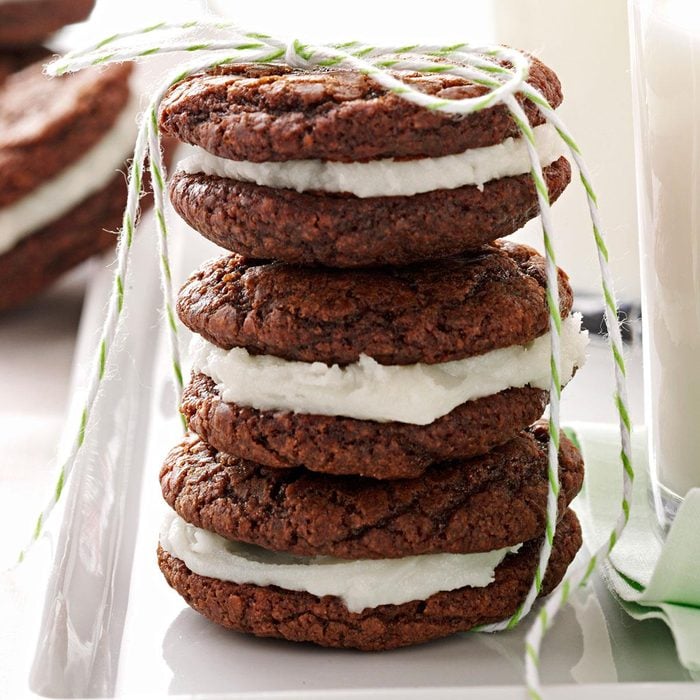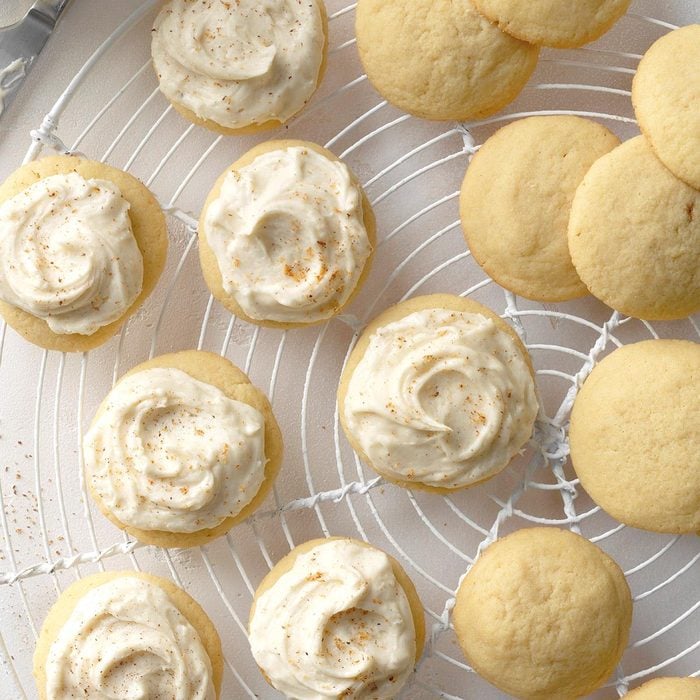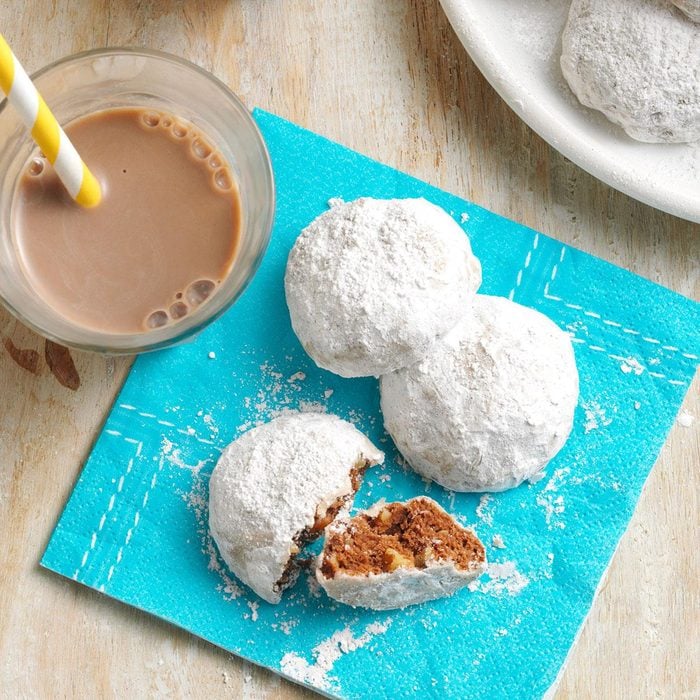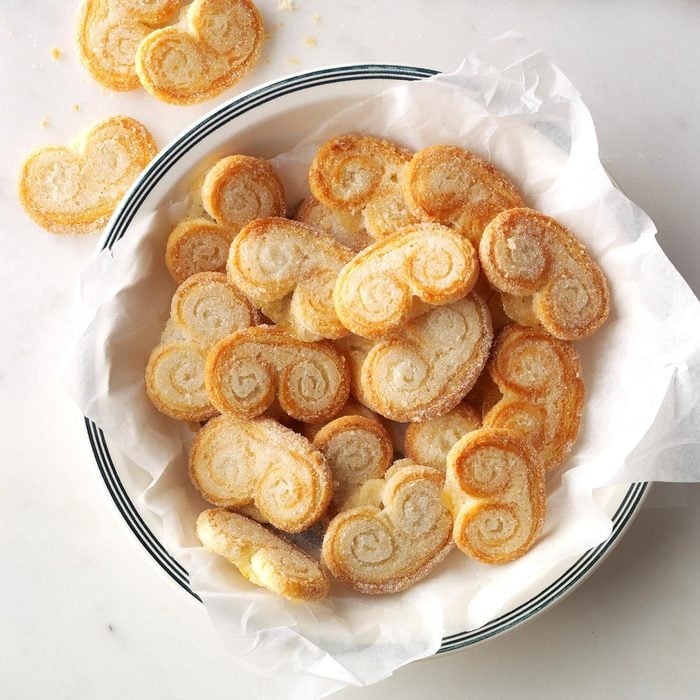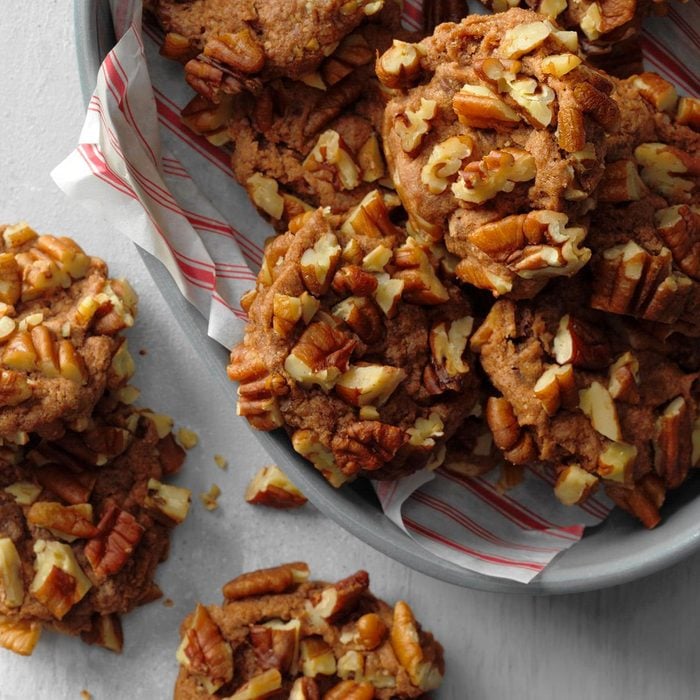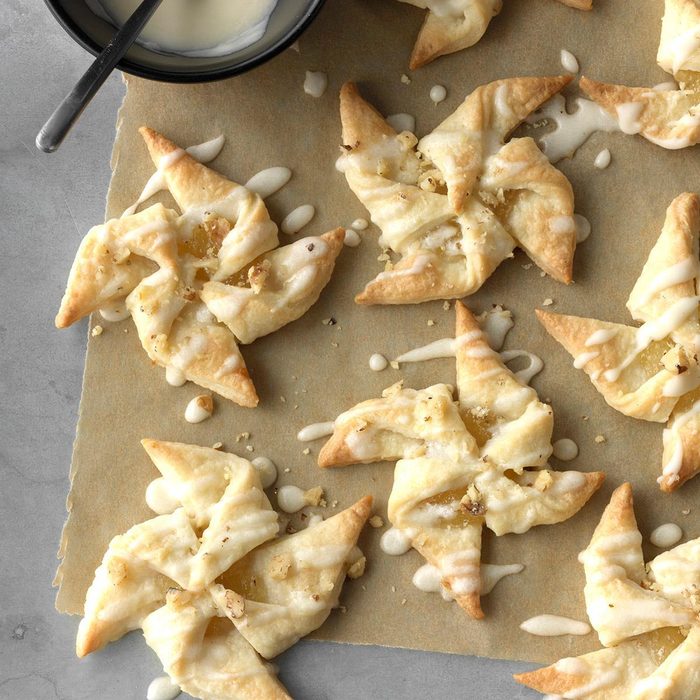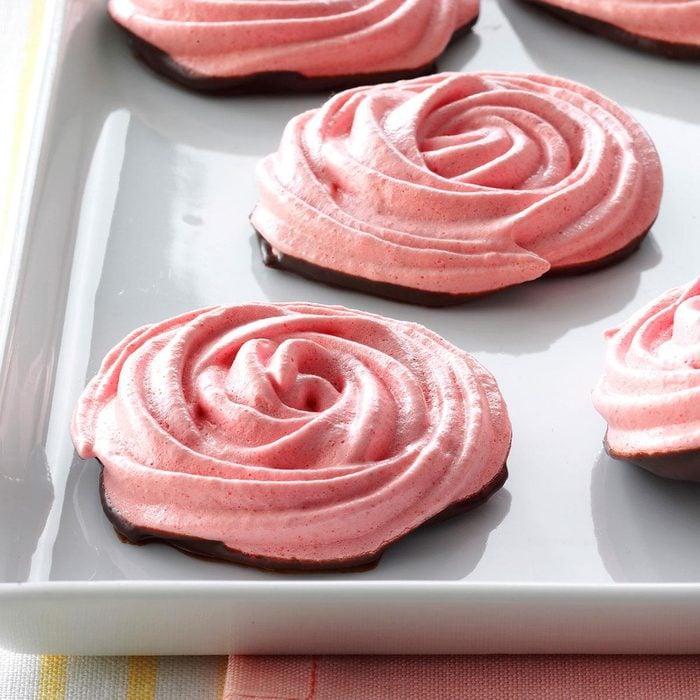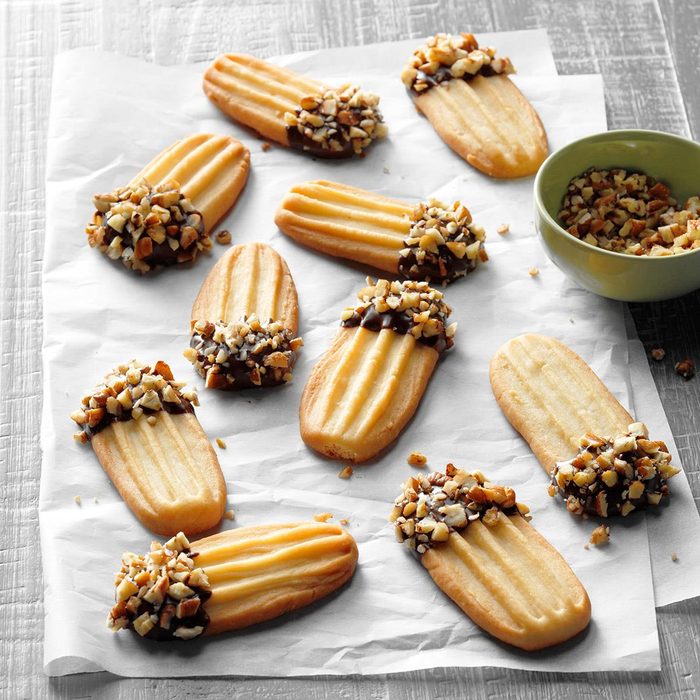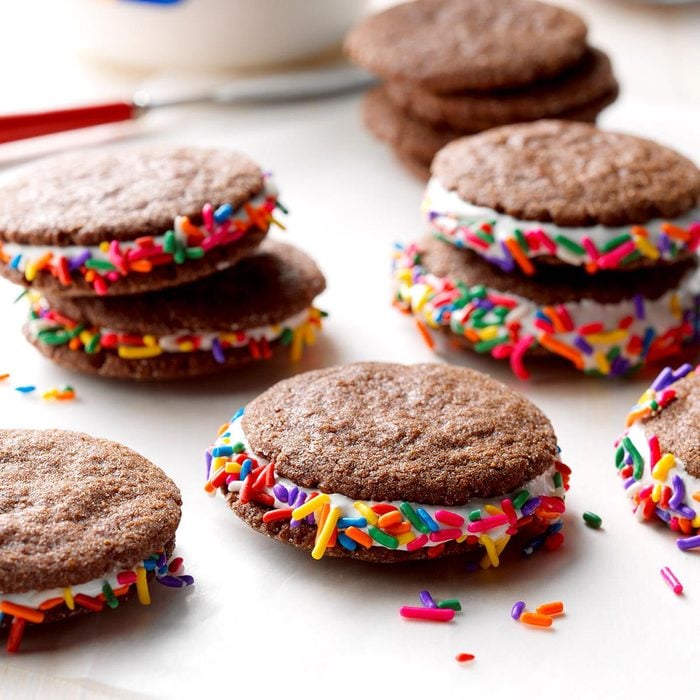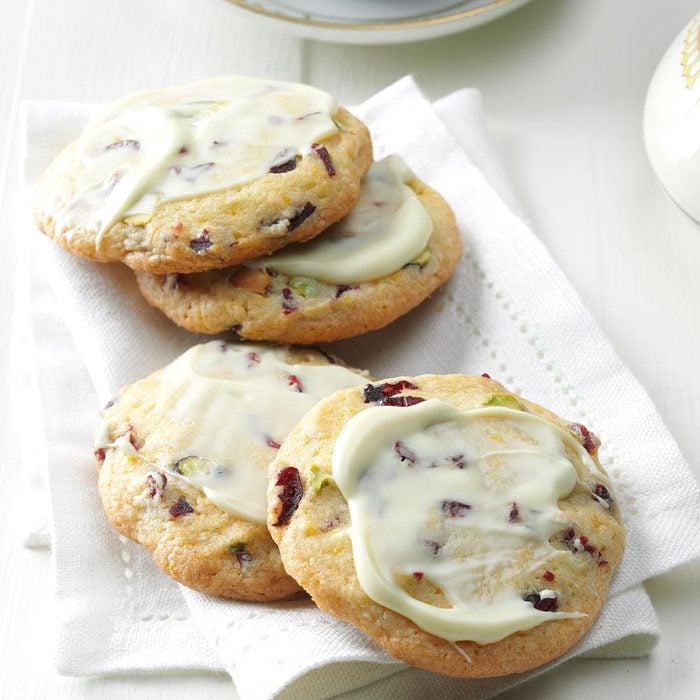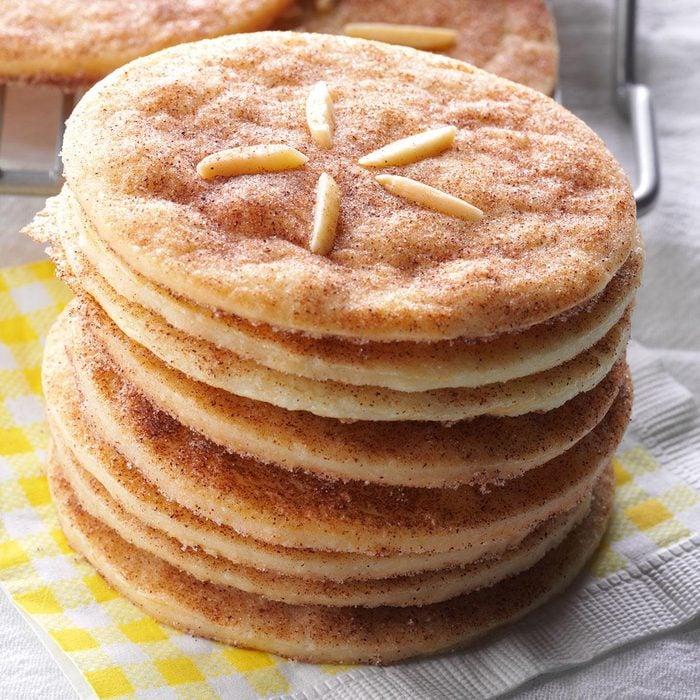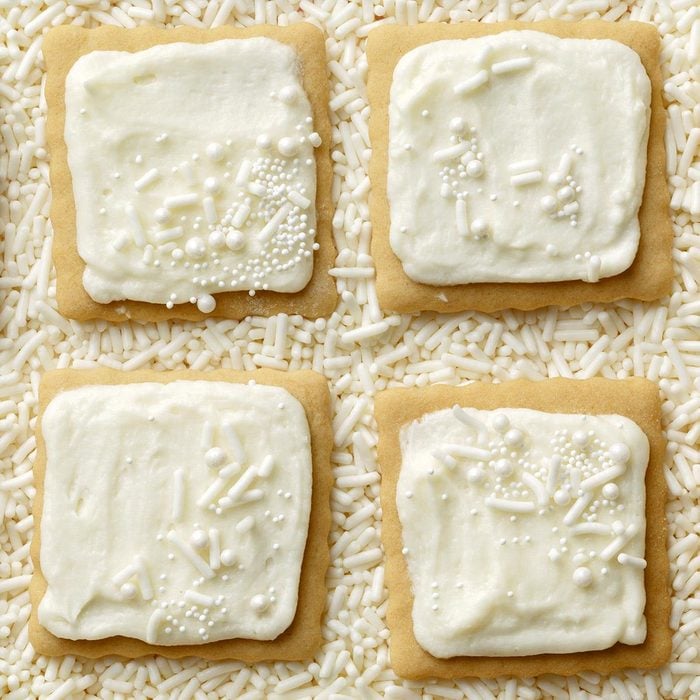Cinnamon Roll CookiesI love cinnamon rolls, but working with yeast can be scary. These cookies give you the taste of a cinnamon roll in cookie form—no yeast required! They look like flattened cinnamon rolls and feel special enough to serve around the holidays. —Erin Raatjes, New Lenox, Illinois
Cherry Cheese WindmillsThese pretty cookies look fancy, but they are really not much work. They're perfect for any occasion. —Helen McGibbon, Downers Grove, Illinois
Chocolate-Raspberry Whoopie PiesI’ve saved this jam-filled whoopie pie recipe for years after cutting it out of a newspaper. It’s one of my grandson's personal favorites. —Nancy Foust, Stoneboro, Pennsylvania
Strawberry Shortcake CookiesIf you like strawberry shortcake, these strawberry shortcake cookies capture that wonderful flavor in cookie form. Ripe berries are blended into a creamy icing and spread over the cookies for a pretty-in-pink finish.
Chocolate Thumbprint CookiesThese chocolate thumbprint cookies are simple but tasty, satisfying any chocolate lover's sweet tooth. Rolled in walnuts and sealed with a kiss, they're delightful on their own, but especially when served with a bowl of maple walnut ice cream.
Hidden Mint MorselsIs it a cookie or a candy? No matter which answer folks choose, they find these minty morsels yummy. The recipe makes so much that you can whip up tons of gifts at once. —Adina Skilbred, Prairie du Sac, Wisconsin
Caramel Pecan ShortbreadMy grandchildren look for Grandma's "candy bar cookies" every Christmas. I recommend doubling the recipe for these sweet treats because they go so fast. —Dorothy Buiter, Worth, Illinois
Cream Cheese Cookie CupsNeed a quick dessert? Try these yummy cookie bites. For a pretty look, use an icing bag to pipe the filling into the cups, then top each with mini M&M's. —Rachel Blackston, Mauk, Georgia
Dipped GingersnapsI get tremendous satisfaction making and giving time-tested yuletide treats like these dipped gingersnaps. Dipping them in white chocolate makes much-loved gingersnaps even more special. —Laura Kimball, West Jordan, Utah
Vanilla-Butter Sugar CookiesThese butter sugar cookies are one of my favorite cookies to bake for Christmas. The dough recipe is versatile, so you can use it for other holidays, too. Children like to help with the cookie decorating. —Cynthia Ettel, Glencoe, Minnesota
Pumpkin Whoopie PiesEmbrace the flavors of fall with pumpkin whoopie pies. Our recipe combines spiced pumpkin cookies with a fluffy cream filling for a seasonal dessert appropriate for autumn gatherings and Halloween parties.
Tender Italian Sugar CookiesThese traditional Italian cookies are moist and tender. —Weda Mosellie, Phillipsburg, New Jersey
Lemony Gingerbread Whoopie PiesThese spiced-just-right whoopie pies combine two popular flavors in one fun treat. The moist cookies are rolled in sugar before baking for a bit of crunch. —Jamie Jones, Madison, Georgia
Coconut CloudsCoconut lovers will have extra reason to celebrate when they taste these cakelike drop cookies. The generous frosting and coconut topping make them a hit at holiday cookie swaps. —Donna Scofield, Yakima, Washington
Mom's Buttermilk CookiesThese soft, tangy buttermilk cookies are topped with creamy frosting are easy to make and perfect for any occasion.
Check out these delicious
drop cookie recipes.
Chocolate Sandwich CookiesThese chocolate sandwich cookies take very little time to make. Boxed cake mix makes these so easy to mix that you can whip these up any time you please.
Holiday Almond TassiesI make so many of these fancy tassies, I use up a 7-pound container of almond paste every year! They’re one of my family’s holiday favorites. —Donna Westhouse, Dorr, Michigan
Rhubarb-Filled CookiesI won a blue ribbon at our local fair for these tender cookies. They're so pretty with the ruby-red filling peeking through the dough. Try making these special cookies and watch the smiles appear. —Pauline Bondy, Grand Forks, North Dakota
Chocolate Crinkle CookiesThese rich and fudgy chocolate crinkle cookies are perfect for sharing at holiday get-togethers.
Frosted Cashew CookiesWe savor these cookies at Christmas, but they're special year-round with coffee or tucked into a lunchbox. I won a ribbon with these cookies at my county fair. —Sheila Wyum, Rutland, North Dakota
Lemon Meltaway CookiesThese lemon meltaway cookies are soft, chewy and thanks to confectioners' sugar and a few other key ingredients, they'll melt in your mouth. Better yet, they're easy to make and relatively quick even with the required chill time. Serve alone or with your favorite ice cream.
Bite-Sized Cinnamon Roll CookiesIf you love cinnamon rolls and spiced cookies as much as I do, make this bite-sized version that combines the best of both worlds. — Jasmine Sheth, New York, New York
Peanut Butter CookiesWe cream shortening instead of butter for this dough, resulting in an ultra-rich-tasting version of traditional peanut butter cookies. Also nice? They take less than 30 minutes to prepare.
Lemon Zucchini DropsWhen we lived on the East Coast, a nearby fruit and vegetable stand had a bakery featuring these soft, cakelike cookies. We missed every bite when we moved away, so I developed this recipe. —Barbara Franklin, Tucson, Arizona
Red Velvet White Chip CookiesThese cookies are soft, chewy and taste as good as they sound. The first time I baked them, I took them to an aunt's yard sale. Now they’re my go-to for any special event. —Samantha Gstalder, Montoursville, Pennsylvania
Peanut Butter PinwheelsThese doubly delightful pinwheel cookies are very easy to prepare. They feature the classic combination of peanut butter and chocolate in an attractive swirl. —Kandy Dick, Junction, Texas
Cranberry Icebox CookiesThese crisp cookies are especially popular at Thanksgiving and Christmas with a cup of hot tea or coffee. It's convenient to bake a batch, too, because you can store the dough in the fridge until needed. —Gloria Anderson, Paso Robles, California
Winning Cranberry Chip CookiesChock-full of cranberries, chocolate chips and nuts, these cookies are fun to eat. They offer a change of pace from traditional Christmas cookies...but don't wait until December to make them. My family requests them all year-round.
Raspberry Linzer CookiesThese wonderful cookies require a bit of extra effort to make and assemble, but the delight on the faces of family and friends when I serve them makes it all worthwhile. —Schelby Thompson, Camden Wyoming, Delaware
Cherry Almond SnowdropsAs soon as I was old enough, I helped make these distinctive almond cookies. You can freeze the dough, so they’re perfect for the busy holidays. —Trisha Kruse, Eagle, Idaho
Date-Nut PinwheelsPinwheel cookies with dates and walnuts are a family treasure. There are a few steps when prepping, so I sometimes freeze the dough and bake the cookies later. —Frieda Whiteley, Lisbon, Connecticut
Mexican Hot Chocolate CookiesWhen it’s baking time, my family lobbies for these Mexican crinkle cookies. You can replace 1 oz. unsweetened chocolate with 3 Tbsp. cocoa powder plus 1 Tbsp. shortening, butter or oil.—Kim Kenyon, Greenwood, Missouri
Chocolate-Mint Creme CookiesA minty filling sandwiched between rich chocolate cookies—what’s not to love? —Gaylene Anderson, Sandy, Utah
Chocolate Chip Peanut Butter CookiesWith this easy recipe for peanut butter chocolate chip cookies, you get two great cookies in one soft, chewy treat.
Double Whammy Eggnog CookiesThese cookies are an amazing way to use extra eggnog. They've become a new family classic. — Teresa Morris, Laurel, Delaware
Chocolate Mexican Wedding CakesThese spiced balls are a yummy twist on a traditional favorite. Sometimes I add mini chocolate chips to the dough and, after baking, dip the cooled cookies in melted almond bark. —Joanne Valkema, Freeport, Illinois
Cranberry Lemon SandwichesI bake cookies all year long, so my friends and family call me the "Cookie Lady"! Whenever I bake these for Christmas, I make three batches...one to keep at home for my husband and two to give as gifts. —Patricia Michalski, Oswego, New York
Palmier CookiesIt takes just two ingredients to make these impressive but easy-to-do French pastries, which are often called palm leaves. —Taste of Home Test Kitchen, Milwaukee, Wisconsin
Butterscotch Gingerbread CookiesEvery time I make these wonderful cookies, the spicy aroma takes me back to my childhood. I helped Mom make them and delivered them to neighbors. —Kara Cook, Elk Ridge, Utah
Dipped Sandwich CookiesWith a lemon filling and chocolate coating, these buttery sandwich cookies are often requested at my house, particularly for special occasions. —Jane Delahoyde, Poughkeepsie, New York
Glazed Maple Shortbread CookiesWhenever I visit friends in Lutsen, Minnesota, I make sure to buy maple syrup there because I think it's even better than in Quebec. These delicious cookies can be decorated with sprinkles but they're just fine as is.—Lorraine Caland, Shuniah, Ontario
Rhubarb Cranberry CookiesI like the sudden hit of sweetness when you bite into the white chips. It really complements the tart flavor from the rhubarb and cranberries. —Elaine Scott, Lafayette, Indiana
Brownie Bourbon BitesChocolate and chopped pecans flavor these simple, spirited treats. Make a double batch so you can give some as gifts and savor the rest!—Paula Kirchenbauer, Newton, New Jersey
Pineapple Star CookiesI'm grateful my neighbor gave me this special recipe. When you see the cookies' pretty shape and savor the pineapple filling and sweet frosting, you'll know they're worth the effort. —Sarah Lukaszewicz, Batavia, New York
Chocolate-Dipped Strawberry Meringue RosesEat these pretty treats as is or crush them into a bowl of strawberries and whipped cream. Readers of my blog, utry.it, went nuts when I posted that idea.—Amy Tong, Anaheim, California
Italian Butter CookiesButtery soft with a sweet chocolate tip, these Italian butter cookies are a surefire way to impress your guests. Make them ahead of time (they freeze exceptionally well), or fresh in just a few hours; either way, you'll have a simple yet tasty treat to satisfy your sweet tooth.
Rainbow S'moreo CookiesHomemade Oreo-style cookies are pretty great on their own, but they're even better when you add graham cracker crumbs to the cookie dough, stuff them with marshmallow creme and roll them in sprinkles. You can change the color of the sprinkles depending on the holiday or occasion. —Colleen Delawder, Herndon, Virginia
Cherry Pistachio CookiesDried cherries, crunchy nuts, bits of orange, white chocolate—there's a lot to love in this cookie! It's very different from any I've had before. —Kathy Harding, Richmond, Missouri
Chocolate Mint CreamsThis recipe came from an old family friend and is always high on everyone's cookie request list. I make at least six batches for Noel nibbling and give some away as gifts. —Beverly Fehner, Gladstone, Missouri
Ginger Creme Sandwich CookiesWith a lemony filling, these spiced cookies go over big because they have old-fashioned, comfort-food appeal. Your party guests will snatch them up! - Carol Walston, Granbury, Texas
Sand Dollar CookiesBefore the military relocated our family, my children had never lived near the ocean. I came up with this special treat with a beach theme—it made our move even more fun!—Michelle Duncan of Callaway, Florida
Chocolate Caramel Kiss CookiesI make this cookie every Christmas with my family. It’s a fun twist on a classic peanut butter blossom because of the cinnamon in the batter and the caramel kiss on top. We love the cinnamon-caramel combination, but you could switch out the kiss for a different festive flavor. —Kristen Heigl, Staten Island, New York
Brown Sugar Cutout CookiesOur neighbor made these for me when I was little, and now I make them for my kids, my grandkids and the children at school. Serve them with milk for the kids and tea for the grown-ups. —Nancy Lynch, Somerset, Pennsylvania



